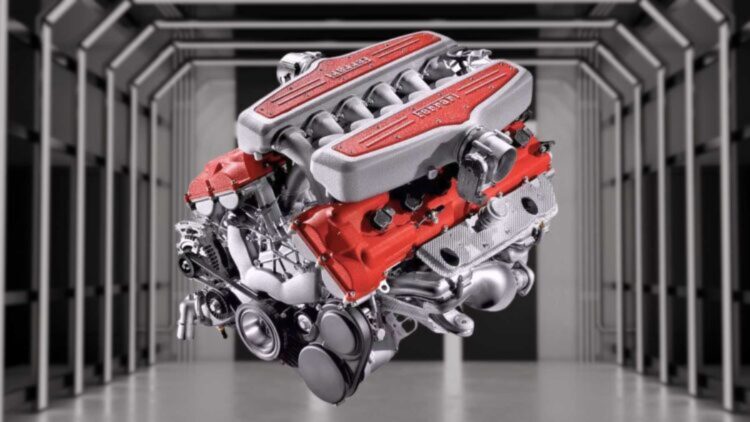It’s designed uniquely and Ferrari introduces a new engine that will be on the move for the first time in history. The fast car maker brings an engine that is designed upside down. It is reported that Ferrari says the engine is made for hybrid cars.
Ferrari introduces an engine with a strange design
According to MotorAuthority, Ferrari has filed a patent application for a hydrogen-powered internal-combustion engine, and the company has hinted that the automaker is considering this as a way to keep combustion engines alive in a future with stricter emissions regulations.
Unlike hydrogen fuel cells, which generate electricity that is then used to power motors, hydrogen combustion engines simply burn hydrogen instead of gasoline in a process that emits no carbon dioxide.
While this is something that is set to cause a storm in the industry, this was initially introduced by a German carmaker, BMW when they built a hydrogen-powered 7 Series back in the early 2000s.
However, this is the first time Ferrari has publicly expressed interest in this engine model. It is also reported that Ferrari sees hydrogen combustion as a way to drastically reduce emissions.
“A hydrogen engine would generate no greenhouse gases and minimal amounts of other pollutants like carbon monoxide and particulates, Ferrari claims in the patent application, which was published by the United States Patent and Trademark Office (USPTO) on Feb. 29 but filed by Ferrari in 2023,” added the publication.
“Minimal emissions is not the same as zero emissions, however, and there’s some concern about the overall carbon footprint of hydrogen production.”
While hydrogen generated through electrolysis, with electricity from renewable sources, has low overall emissions, other production methods using fossil fuels could be as dirty as coal thus endangering the environment – the non-profit Rocky Mountain Institute said in 2022.
Why Ferrari wants to make a strange engine
Motortrend also reports that the main reason Ferrari seems convinced that an upside-down engine makes sense is because of how they plan or propose to arrange the fuel tank.
“There would be four tanks, all capable of holding more than 10,000 psi of hydrogen gas, with two spherical tanks flanking each side of the engine,” it reports.
“The other two tanks are cylindrical and would sit on top of the engine, with the longer of the two forward of the rear wheels.
“This would require an inline-block shape but doesn’t explain the upside-down placement. Oddly, Ferrari’s own patent doesn’t necessarily limit this idea to an inline-six, as shown, but it’s “preferred.”
Why Don’t Upside-Down Engines Exist?
The publication highlights that the main reason there are inverted engines in production cars is gravity. This is also made possible by factors such as oiling.
“In a conventional wet-sump oiling system, you can count on gravity to help drain oil back down to the oil pan and the pump and circulate it where it needs to go,” said Motortrend.
“The crankshaft is also low in a conventional engine, so the oiling path isn’t far from the pump.”
Furthermore, the solution is a pressurized dry-sump oiling system, and Ferrari’s specific solution to its proposed I-6 is three pumps, one for pressurizing the feed side located on one side of the block and a pair of pumps for the recovery side positioned on the other side of the block.
These pumps are connected to the engine via its camshafts, which draw and send oil to a recovery tank. All these ideas are just like a conventional dry-sump system.
In conclusion and based on a sketch published by the car review magazine, “The fourth pump seen in the patent is for the coolant and driven by the camshafts.”

